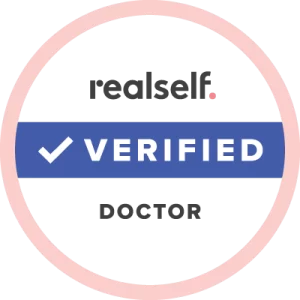Botulinum Toxin Botox Injections
Tunbridge Wells, Kent, London
Botulinum injections were a true game changer when they were introduced into the world of plastic surgery 25-years ago. When used carefully they can help brighten and freshen the appearance, reduce wrinkles and help to address facial harmony and overactive muscles. For further information, please also see Mr Pacifico’s blog here.
What are anti-wrinkle injections?
Botulinum toxins (including brands such as Botox, Azzalure and Dysport) are produced by the bacteria clostridium botulinum. They are agents that affect the nerves at the point where they enter muscles, and therefore prevent the muscles from working. The effects are not permanent, and last 3-6 months.
What does it involve?
Botulinum toxins is administered by an injection directly into the appropriate muscles, usually on the face. It is given with a tiny needle very precisely into various locations in the face. Most commonly it is given to the frown area in the middle of the forehead, and also to the crows feet area. The untreated areas continue to work normally.

“I am now 5 months on from surgery for eyelids and brow lifts. My experience with Marc Pacifico the surgeon and the team at Purity Bridge was that I was a returning patient having already undergone previous treatment… I can see a vast improvement and my eyes are now wide open and the asymmetry I had in my eyebrows has been rectified and now symmetrical. Marc is a knowledgeable professional who is confident in surgery and has a good competent team around him which I would highly recommend.”
What are the benefits?
- Botulinum toxin works best in people with fine lines and few wrinkles, and can reduce the amount of wrinkling of the skin.
- If wrinkles are deep and well-established, Botulinum toxins will not work. In addition Botulinum toxins will not treat sun-damaged skin.
- Botulinum toxin may also be used to treat conditions such as hyperhidrosis (excessive sweating, often in the armpits or palms and soles).
How long does the procedure take?
The procedure is done on an outpatient basis and takes about 10-15 minutes, depending upon the number of injections needed.
What is the recovery period?
Recovery after Botulinum toxins is very quick – it is an office-basd procedure, so you can walk out afterwards. There will be a little redness at the site of the injections and some subtle lumps temporarily, but these resolve in a few hours after the injections.
What should I do after the injections?
- You may return to normal activities immediately after the injections, as no anaesthetic has been used. Following the injections you should keep your head up and not stoop over or strain.
- Do not manipulate or massage the treated area, as this may spread the Botulinum toxin to neighbouring areas and cause unwanted effects.
- Light make-up may be applied 1-hour after the procedure.
- It can be helpful to excercise the non-treated facial muscles by frowning and smiling frequently.
What are the success rates?
Botulinum toxin therapy has good success rates.


Who should not have Botulinum toxins?
- People with an allergy to albumin or eggs should avoid Botulinum toxins .
- If you have a disease that affects your muscles and nerves such as amyotrophic lateral sclerosis, myasthenia gravis or Lambert-Eaton syndrome you should not have Botulinum toxin.
- In addition, if you are taking antibiotics in the aminoglycoside family, such as gentamicin and tobramycin, you should not have Botulinum toxin.
What are the possible complications?
Some people experience a mild headache after the procedure, so it is advisable to take some paracetamol prior to having the injections.
Occasionally areas may be under or over-corrected. This may need to be treated by further “touch-up” injections given 2-4 weeks after the first injections. If Botulinum toxin is overdone or it migrates into unwanted areas, it can result in weakness and drooping of an eyelid or asymmetry of facial expression.
Want to learn more about Anti-wrinkle Injections in Tunbridge Wells, Kent?
To learn more about Botulinum injections, please contact us.
Make an EnquiryVideos
The Difference Between Botox and Fillers
Haute Couture Botox to Treat Fine Lines & Wrinkles
